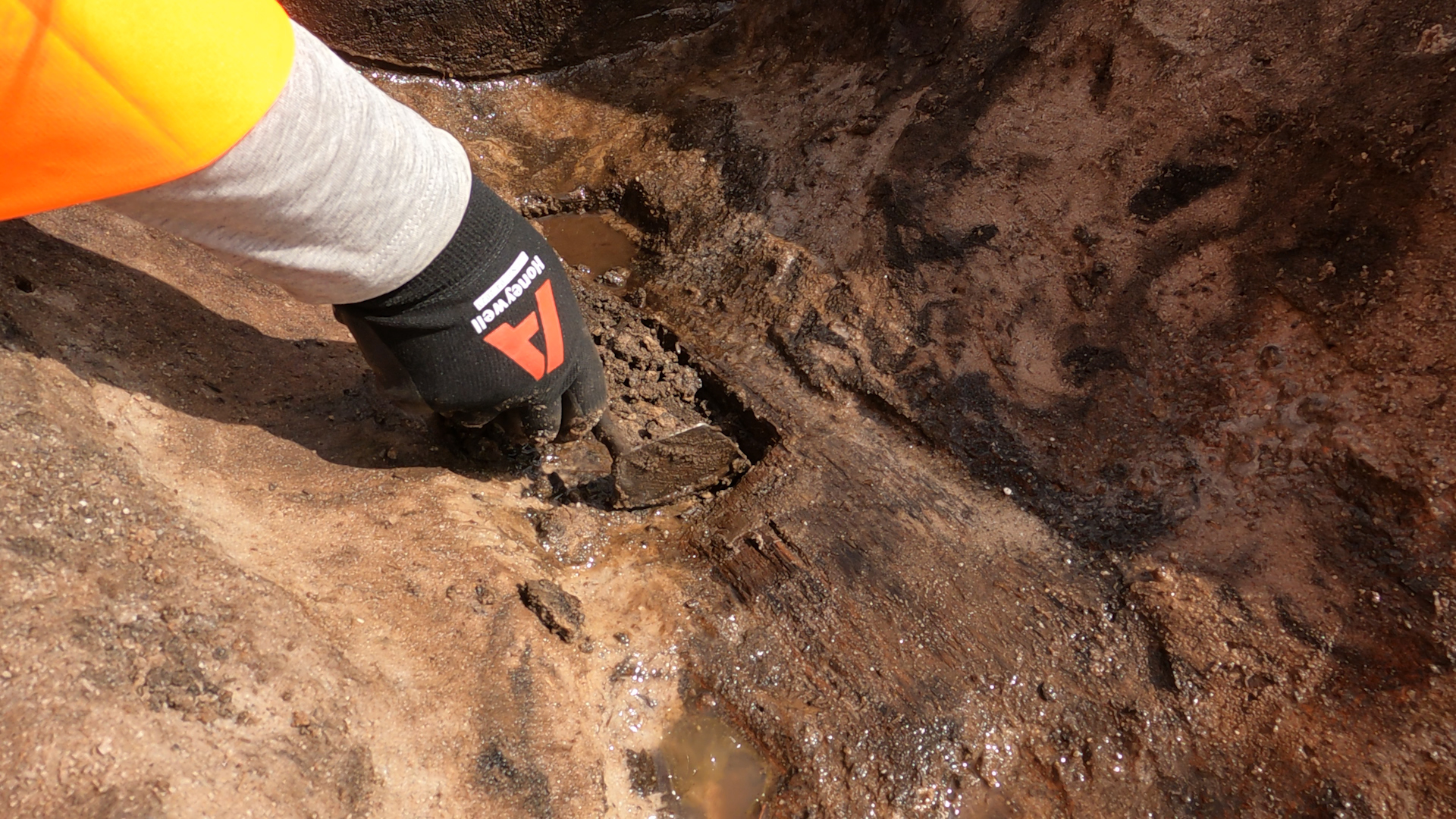Archaeologists excavating a site in Dorset, England, have recovered one of the oldest and most complete wooden tools ever unearthed in Britain. The ancient spade is thought to be between 3,400 and 3,500 years old and reveals new insights into the relationship between Bronze Age humans and this waterlogged landscape.
The excavation took place at a site near Poole Harbour, which is a diverse wetland habitat today. At present, there is little evidence that humans had any permanent settlements in this area back in the Middle Bronze Age, but researchers believe the site served some sort of seasonal purpose and may have been repeatedly visited over the centuries.
During this time, the Arne Moors would have been prone to flooding during the winter months, and then the land would have dried throughout the summer. This would have provided people living in the region with various natural resources to be exploited. For instance, it may have been an ideal site for cutting and drying peat for fuel, grazing livestock, hunting, fishing, gathering rushes for thatching, basket weaving, and flooring material, and possibly cultivating crops.
The significance of this is now made more apparent with the spade’s discovery.
“The spade is a really rare survival for the Bronze Age period. It is likely that similar tools were more widely used in this period, yet wooden objects such as this can only survive in specific burial conditions,” the Wessex Archaeology team told IFLScience.
“This is what makes the spade such an exceptional discovery. It provides us with a glimpse into human activity within the wetland landscape in the Moors at Arne.”
The spade has been hewn from a single solid piece of wood, which would have demanded many hours of manual work to shape, but it has survived to this day because of the waterlogged environment it was buried in (a buried spade seems ironic).
“The moment the spade started to be uncovered the team on site knew it was a very special object and now we’re able to analyse it here in the laboratory, we’re starting to reveal its story,” Environmental Archaeologist Edward Treasure explained in a statement.
“It’s made of oak and radiocarbon dating of the wood itself confirms it is c. 3,500-3,400 years old, placing it firmly in the Middle Bronze Age. This is an incredibly exciting moment and we’re looking forward to finding out more as the process unfolds.”
To date, only one other Bronze Age wooden tool has been recovered in Britain. This took place at an ancient mine in Cheshire in 1875, where a long, leaf-shaped object was unearthed – what was later named the “Brynlow Shovel”. It is hoped that ongoing analysis will teach us more about the role these wooden tools played and the ways they were used.
“The spade has been stabilised at the Wessex Archaeology laboratories, and it needs to undergo further conservation through freeze-drying. This requires impregnation with a water-soluble polymer which will prevent the spade from shrinking when the water is extracted during the freeze-drying process, it’s then stable to be stored at ambient conditions. It will then be studied by our Finds Specialists, who will be able to study it further,” the Wessex Archaeology team told IFLScience.

The spade owes its remarkable preservation to the waterlogged environment it was buried in.
Image courtesy of Wessex Archaeology.
“We hope that further analysis by our specialists can start to unravel the story of what the spade was used for.”
The Moors at Arne project, which discovered the spade, seeks to adapt over 150 hectares (370 acres) of land into a diverse wetland habitat for various species. This type of habitat is being lost in other areas around Poole Harbour due to “coastal squeeze”, which is basically where rising sea levels come into contact with human-made structures, like flood defenses. This can cause the loss of valuable intertidal habitats, like mudflats and salt marshes.
“The current climate challenge poses increasingly severe risks for coastal ecosystems and coastal communities all around the globe. The archaeological story of The Moors at Arne gives us an incredible understanding of how people lived thousands of years ago and adapted to change,” Matt Phillips, the Senior Project Manager leading the project for Kier, an infrastructure service working on the project, explained in the statement.
“Working on complex environmental projects like this, gives us the opportunity to share fascinating insights into the past and explore what this means with communities today.”
As work progresses on the site, the team hope to learn more about how ancient people interacted with this valuable landscape and how this changed over time.
Source Link: "Exceptional" 3,500-Year-Old Wooden Tool Is Among Oldest Ever Found In Britain